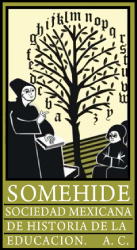Inclusion and interculturality? Living in the Casa del Universitario Indígena (CUI) of the Universidad Autónoma de Guerrero
DOI:
https://doi.org/10.29351/amhe.v4i2.622Keywords:
Inclusion, interculturality, community, lived experiencesAbstract
This paper is based on a Master’s research conducted in the Department of Educational Research at Cinvestav. It explores the experiences of the residents of the Casa del Universitario Indígena (CUI), an initiative of the Universidad Autónoma de Guerrero (UAGro) designed as an inclusion policy for Indigenous students. The CUI provides a safe and free living space, addresses their basic needs, and offers essential resources for learning. The CUI stands out as a space of interculturality and constant coexistence, where interactions among residents, their peers, authorities, and various areas of the shelter are fundamental to the inclusion process. This presentation shares experiences that illustrate how these factors impact the educational and personal lives of students and emphasizes the relevance of the CUI in their academic development and resilience. Life at the CUI represents a social microcosm where diverse cultures and experiences converge, fostering a sense of community. Through daily coexistence and conflict management, students develop key social and emotional skills such as empathy and respect for differences. These aspects are addressed from various angles: daily routines, identity formation, and the role of the shelter in protecting vulnerable groups. The study was based on a series of qualitative interviews with a phenomenological approach that capture the experiences of CUI residents in relation to their inclusion at the university and the effects of the COVID-19 pandemic. The interviews were mainly conducted via videoconferencing due to health restrictions, and in some cases, at the CUI itself. The questions focused on three key areas: the university experience, life at the CUI, and the impact of the pandemic.
References
Alcántara, J., y Navarrete, R. (2014). Acceso a la educación superior para estudiantes indígenas: obstáculos y desafíos. Revista de Investigación Educativa, 32(2), 345-362. https://doi.org/10.6018/rie.32.2.199401
Blanco, M. (2020). Desafíos y oportunidades en la transición a la universidad para estudiantes indígenas. Revista de Educación Superior, 49(3), 1-20. https://doi.org/10.1016/j.resu.2020.02.001
Casillas, R., Badillo, A., y Ortiz, M. (2010). Barreras lingüísticas y desempeño académico en estudiantes indígenas. Revista de Investigación Educativa, 28(1), 123-140. https://doi.org/10.6018/rie.28.1.125981
Esteban, R. (2011). Transformación identitaria de estudiantes indígenas en contextos académicos urbanos. Revista de Investigación Educativa, 29(2), 345-362. https://doi.org/10.6018/rie.29.2.125741
Fuster, M. (2019). Enfoque fenomenológico en la investigación cualitativa. Revista de Investigación Educativa, 37(2), 421-438. https://doi.org/10.6018/rie.37.2.349501
UAGro [Universidad Autónoma de Guerrero] (2017). Plan de Desarrollo Institucional 2017-2021. UAGro.
UAGro (2020). Anuario estadístico 2019-2020. UAGro.
Weiss, L. (2012). Resistencia cultural y reconfiguración de la identidad en estudiantes indígenas. Revista de Antropología Social, 42(3), 123-140.
Downloads
Published
How to Cite
Issue
Section
License
Copyright (c) 2025 Alexis Alberto Castro-Agüero

This work is licensed under a Creative Commons Attribution-NonCommercial 4.0 International License.
Todos los contenidos del Anuario Mexicano de Historia de la Educación se publican bajo una licencia Creative Commons Atribución No Comercial 4.0 Internacional (CC BY-NC 4.0), que permite compartir (copiar y redistribuir el material en cualquier medio o formato) y adaptar (remezclar, transformar y construir a partir del material) para fines no comerciales, dando los créditos a los autores y a la revista, tal como lo establece la licencia.
La política de acceso abierto y de licencias con “algunos derechos reservados” no niega la propiedad intelectual ni los derechos de los autores respecto a sus artículos, pues ellos son los titulares, en tanto que el Anuario Mexicano de Historia de la Educación no los reserva para sí ni para la institución editora, ya que se apegan a movimientos de acceso abierto como los Principios y Valores del Sistema de Información Científica Redalyc - Red de Revistas Científicas de América Latina y el Caribe, que pugnan por la eliminación de las políticas de embargo para que el autor retenga los derechos de su obra (principio número 8). Así como las políticas de acceso abierto del Directory of Open Access Journals (DOAJ).
Los autores podrán distribuir su propio material en cualquier otro medio o soporte, siempre y cuando sea para fines no comerciales, informando a los editores que el trabajo será publicado nuevamente y dando el crédito correspondiente al Anuario Mexicano de Historia de la Educación.
La publicación en el Anuario Mexicano de Historia de la Educación, por su carácter gratuito, no da derecho a remuneración económica alguna a los autores, ni a los dictaminadores.
Los lectores podrán reproducir (copiar), comunicar, distribuir o hacer obras derivadas de los artículos o colaboraciones publicados en el Anuario Mexicano de Historia de la Educación en los siguientes casos:
- Para fines públicos.
- Sin fines comerciales.
- Que se reconozca la autoría de la obra y se cite su origen con información completa: Apellido/s del autor, inicial/es del nombre/s. (año de publicación). Título del artículo. Nombre de la revista, volumen (número de ejemplar), página inicial del artículo-página final del artículo. DOI o URL (formato sugerido de acuerdo al estilo APA en su versión más reciente).
El cuerpo editorial del Anuario Mexicano de Historia de la Educación asumirá el compromiso de notificar oportunamente a los autores sobre cualquier cambio de ubicación de los artículos en el sitio (cambio de dirección URL o de conexiones para identificar el artículo).
Los autores, al enviar sus trabajos para su posible publicación, deberán tomar en cuenta los puntos anteriores, mismos que se contemplan en el Acuerdo entre autor y el Anuario Mexicano de Historia de la Educación.












